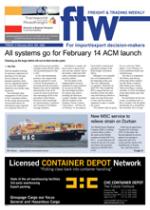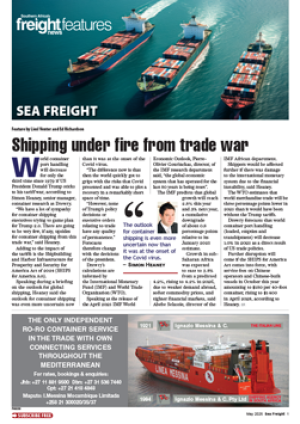Special Economic Zones
In a Government Gazette
dated 23 January 2012 the
Minister of Trade Industry,
Dr Rob Davies, published for
public comment the “Policy
on the Development of
Special Economic Zones in
South Africa - 2012” and the
“Special Economic Zones Bill,
2011”.
The Policy document
consist of four Sections,
namely (i) Introduction, (ii)
Key Elements of the Special
Economic Zones Policy, (iii)
Implementation of the Special
Economic Zones Programme;
and (iv) Conclusion.
According to the “Executive
Summary” of the document a
Special Economic Zone (SEZ)
is defined as “a geographically
designated area of a country
set aside for specifically
targeted economic activities,
which are then supported
through special arrangements
(which may include laws) and
support systems to promote
industrial development”. The
SEZ programme is a tool that
is used by many economies
to promote trade, economic
growth and industrialisation.
It further states: “In an
effort to reposition itself
in the world economy, the
South African government
established the Industrial
Development Programme
(IDZ) in 2000. The
programme’s main focus
was to attract foreign direct
investment (FDI) and export
of value-added commodities.
The main limitation of the
programme was that the IDZs
could only be designated
adjacent to a sea port or
international airport, and that
excluded other regions in the
country which had industrial
potential but did not meet the
IDZ criteria.”
The Bill consists of
seven Chapters, namely (i)
Interpretation, Objectives
and Application, (ii) Special
Economic Zones Board, (iii)
Special Economic Zones
Policy and Strategy, (iv)
Financing and Incentives,
(v) Designation of Special
Economic Zones, (vi) Special
Economic Zone Operator
Permit, and (vii) General
Provisions.
Comment is due by
22 March 2012.
Television Aerials
Application
The increase in the “General”
rate of customs duty on other
aerials for reception apparatus
for television, whether or
not also capable of receiving
radio-broadcast, (excluding
indoor “set-top” aerials with a
permanently affixed base for
placing on top of television
set or another flat surface),
from a rate of customs duty
of 20% ad valorem through
the creation of an additional
8-digit tariff subheading.
The application was lodged
by Ellies Holdings (Pty) Ltd
who stated the reason for the
application was to develop the
aerial industry by exploiting
the opportunity presented by
the Government’s decision to
implement the Broadcasting
Digital Migration Programme.
Comment is due by
24 February 2012.
Hydraulic Brake Fluids
Application
In last week’s column we
alluded to the fact that a
correction notice would
appear in the Government
Gazette. On 27 January 2012
the correction notice appeared
in respect of the proposed
decrease in the rate of customs
duty on hydraulic brake fluids,
not containing or containing
less than 70% by mass of
petroleum oils or oils obtained
from bituminous minerals,
from 10% ad valorem to free
of customs duty.
The application was lodged
by the South African Brake
Fluid and Coolants (Pty) Ltd
t/a Sabac, who stated that
the hydraulic brake fluids
were not manufactured in the
Southern African Customs
Union (Sacu) and that the
current rate of customs duty
had cost-raising implications.
(It will be interesting to see,
if the reduction of the rate
of customs duty is realised,
to what extent the price of
hydraulic brake fluids will
reduce.)
Comment is due by 24
February 2012.
DUTY CALLS
03 Feb 2012 - by Riaan de Lange
0 Comments
FTW - 3 Feb 12

03 Feb 2012
03 Feb 2012
03 Feb 2012
03 Feb 2012
03 Feb 2012
03 Feb 2012
03 Feb 2012
03 Feb 2012
Border Beat
Featured Jobs
New
New
